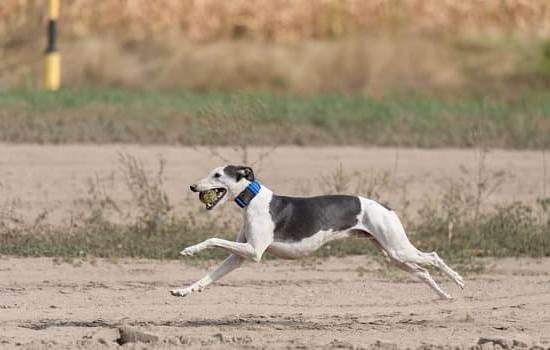Are you wondering when to remove treats when training your dog? Treats play a crucial role in rewarding and reinforcing positive behavior during training sessions. Understanding the role of treats in dog training is essential for knowing when and how to transition away from using treats as a primary reward. Timing, recognition of readiness, and differentiating between necessary and optional treats are significant factors to consider when determining the appropriate time to remove treats from your dog’s training regimen.
When it comes to treat-based training, timing is everything. The timing of giving a treat directly correlates with the effectiveness of the reward and reinforcement. Knowing when to deliver a treat at the right moment can influence your dog’s behavior and learning process. As such, understanding the importance of timing in treat-based training is critical for successfully weaning off treats as the primary reward.
Recognizing when your dog is ready to wean off treats involves observing their response to commands and cues without the presence of a treat. As your dog becomes more consistent in following commands and displaying desired behavior, it may be an indication that they are ready to transition away from relying solely on treats for rewards. Understanding these signs is vital for determining the appropriate time to adjust your training approach towards removing treats progressively.
It’s important to differentiate between necessary and optional treats in training. Identifying which behaviors require immediate reinforcement through treats, and which ones can be rewarded through other methods, enables a smoother transition away from treating dependence. Additionally, shifting towards intermittent reinforcement as a training method allows for gradual reduction of treat usage while still maintaining effective rewards in your dog’s training journey.
The Importance of Timing in Treat-Based Training
When it comes to treat-based dog training, timing plays a crucial role in the effectiveness of your training sessions. The timing of when you deliver treats to your dog can significantly impact their learning and behavior. Here are some key points to consider when it comes to the importance of timing in treat-based training:
- Immediate reinforcement: Dogs have a short attention span, so it’s important to give them the treat immediately after they have performed the desired behavior. This immediate reinforcement helps your dog associate the treat with the specific action you want them to repeat.
- Timing precision: The timing of when you give the treat is also important in shaping your dog’s behavior. If you wait too long or give a treat for the wrong behavior, it can confuse your dog and hinder their progress in training.
- Consistency: Consistent timing in treating your dog for good behavior helps them understand what is expected of them. This consistency reinforces their understanding of what actions lead to rewards.
Understanding the significance of timing in treat-based training can make a significant difference in how quickly and effectively your dog learns new behaviors and commands.
In addition to precise timing, it’s important to also consider the frequency at which treats are given during training sessions. Over time, as your dog becomes more proficient at following commands, you may need to start weaning off treats and transitioning to other forms of reinforcement. Recognizing when your dog is ready for this transition is essential for their continued development and obedience.
Recognizing When Your Dog Is Ready to Wean Off Treats
As a dog owner, it is important to understand that treats play a significant role in training your furry friend. These treats serve as positive reinforcement and motivation for dogs to learn new commands and behaviors. However, it is equally crucial to recognize when your dog is ready to wean off treats and transition to other forms of reinforcement.
One key indicator that your dog is ready to start reducing their dependence on treats is when they consistently perform the desired behavior without the need for a treat every single time. This shows that they have understood the command and are responding to it out of understanding rather than just for the reward.
Additionally, if your dog happily follows commands even when you don’t have a treat in hand, it may be a sign that they are ready to begin the process of reducing treat-based rewards.
Another important consideration is the ability of your dog to maintain learned behaviors over time without constant treat reinforcement. If your dog can reliably perform commands and exhibit good behavior in various environments and situations, it may be an indication that they are ready for a shift in their training regimen.
It’s essential to remember that each dog is unique, and there isn’t a one-size-fits-all timeline for transitioning away from treats. Pay close attention to your dog’s progress and behavior during training sessions, and be patient as you gradually decrease the frequency of treat rewards while introducing other forms of positive reinforcement. Keep in mind that consistency, positive reinforcement, and patience are key elements in successfully weaning your dog off treats during training.
| Indicator | Signs |
|---|---|
| Consistent Behavior | Demonstrates consistent performance of commands without needing a treat every time. |
| Command Response | Happily obeys commands even when no treat is present. |
| Maintained Behavior | Showcases learned behaviors reliably in various environments without constant treat reinforcement. |
Differentiating Between Necessary and Optional Treats in Training
Understanding the role of treats in dog training is crucial for pet owners who want to effectively train their dogs. Treats serve as a primary motivator and reinforcement for desired behavior during training sessions. However, it is important to differentiate between necessary and optional treats when training your dog.
Necessary treats are typically high-value rewards that are essential for teaching new behaviors or commands to your dog. These treats are often used during the initial stages of training to capture your dog’s attention and motivate them to learn. Examples of necessary treats include small pieces of cooked chicken, cheese, or freeze-dried liver. These high-value treats should be reserved for teaching foundational skills and commands such as sit, stay, and come.
On the other hand, optional treats can be used as secondary reinforcements during training sessions. These treats are less valuable than necessary treats and can include commercial dog treats or kibble. Optional treats are suitable for reinforcing behaviors that your dog has already learned and mastered. It is important to use these treats sparingly to avoid overfeeding your dog or diminishing the value of necessary treats.
When differentiating between necessary and optional treats in training, pet owners must strike a balance in using both types of rewards effectively. By understanding the role and purpose of each type of treat, you can optimize your dog’s learning experience and create a successful training journey.
| Necessary Treats | Optional Treats |
|---|---|
| High-value rewards | Secondary reinforcements |
| Essential for teaching new behaviors | Reinforcing mastered behaviors |
| Examples: cooked chicken, cheese, freeze-dried liver | Examples: commercial dog treats, kibble |
Shifting to Intermittent Reinforcement as a Training Method
Once your dog has mastered the basic commands and behaviors with the use of treats, it’s important to begin transitioning to intermittent reinforcement. This method involves rewarding your dog with treats, praise, or affection randomly and not every single time they perform a desired behavior. This helps to prevent over-reliance on treats and encourages them to respond consistently without expecting a treat each time.
There are several benefits to incorporating intermittent reinforcement into your dog’s training routine. It helps to strengthen the learned behaviors, as your dog will continue to perform the desired actions in the hopes of receiving a reward. Additionally, it simulates real-life scenarios where rewards are not always guaranteed, improving their ability to respond in various situations.
When implementing intermittent reinforcement, it’s essential to vary the rewards given to your dog. This can include providing a mix of treats, verbal praise, and physical affection as reinforcements for good behavior. By mixing up the types of rewards, you can keep your dog engaged and motivated during training sessions.
To effectively shift to intermittent reinforcement as a training method, it’s important to gradually reduce the frequency of treat rewards while increasing the use of verbal praise and physical affection. This gradual transition will help your dog understand that they won’t always receive a treat for performing a command but will still be rewarded in other ways. Remember that each dog is different, so monitor their progress closely and adjust your training methods accordingly.
- Benefits of intermittent reinforcement
- Varying rewards for intermittent reinforcement
- Gradually reducing treat rewards
Incorporating Verbal Praise and Physical Affection as Rewards
The Power of Verbal Praise
Verbal praise is a powerful tool in reinforcing positive behavior in your dog. When your dog performs a desired behavior or command, use a cheerful and enthusiastic tone to express your approval. For example, saying “good boy/girl” or “well done” can signal to your pup that they have done something right. Consistent use of verbal praise will help your dog understand what behaviors are desirable and reinforce their willingness to comply with commands.
Utilizing Physical Affection
Physical affection, such as petting, scratching, or gentle hugs, can also serve as effective rewards during training. Many dogs respond positively to physical touch as a form of reinforcement for good behavior. When your dog follows a command or exhibits positive conduct, offer them physical affection as a reward. This not only strengthens the bond between you and your pet but also reinforces their understanding of what behaviors are appreciated.
As you begin incorporating verbal praise and physical affection into your training regimen, observe how your dog responds to these alternative rewards. Every dog is unique, and some may respond more favorably to one form of reward over another. It’s essential to tailor your approach based on what motivates and pleases your specific canine companion.
Addressing Common Challenges in Transitioning Away From Treats
Transitioning away from treat-based training can pose some challenges for both you and your dog. It’s important to recognize these challenges and address them effectively in order to successfully wean your dog off of treats.
Resistance From Your Dog
One common challenge in transitioning away from treats is resistance from your dog. After becoming accustomed to receiving treats as rewards, your dog may be less motivated to follow commands or engage in training without the promise of a tasty treat.
This resistance can manifest as disobedience, loss of interest, or frustration during training sessions. It’s important to respond to this resistance with patience and understanding, and to gradually shift your dog’s focus from food rewards to other forms of reinforcement.
Lack of Motivation
As you begin to phase out treats in training, you may notice a lack of motivation in your dog. Without the immediate gratification of a treat, your dog may be less inclined to respond to commands or engage in training activities. In response, it’s essential to find alternative sources of motivation for your dog.
This could include verbal praise, physical affection, or access to a favorite toy as a reward for good behavior. By identifying what motivates your dog and incorporating these rewards into your training sessions, you can help maintain their enthusiasm and engagement.
Adjusting Expectations
When transitioning away from treat-based training, it’s important to adjust your expectations for your dog’s behavior. Your dog may not respond as quickly or consistently without the promise of a treat, especially in the initial stages of weaning off treats.
Recognizing that this transition will take time and persistence can help manage frustrations on both ends. By being patient with your dog and adjusting your training methods as needed, you can effectively address any challenges that arise during this process.
Monitoring and Adjusting Training Methods as Your Dog Progresses in Their Training Journey
In conclusion, knowing when to remove treats when training your dog is an essential part of the learning process for both you and your furry companion. Understanding the role of treats in dog training and the importance of timing in treat-based training are crucial first steps.
Once your dog has mastered the basic commands, recognizing when they are ready to wean off treats becomes important. It is essential to differentiate between necessary and optional treats in training, as well as shift to intermittent reinforcement as a training method.
As your dog progresses in their training journey, it is important to incorporate verbal praise and physical affection as rewards to replace treats. This transition may present some common challenges, but with patience and consistency, it is possible to address them effectively. Additionally, monitoring and adjusting training methods as your dog continues their training journey is key to ensuring long-term success.
Overall, the decision of when to remove treats when training your dog should be based on their individual progress and needs. By following these guidelines and being attentive to your dog’s behavior and responses, you can successfully navigate the transition away from treats while still reinforcing positive behaviors effectively. Remember that every dog is different, so be flexible in adapting your approach as needed.
Frequently Asked Questions
When Should I Stop Training My Dog With Treats?
It’s important to wean your dog off treats during training once they have mastered the desired behavior and consistently respond to your commands. Gradually replacing treats with verbal praise and physical affection can help transition your dog away from relying solely on food rewards.
When Should I Stop Giving Treats for Potty Training?
You can stop giving treats for potty training once your dog consistently goes to the bathroom in the designated area without accidents. At this point, you can gradually decrease the frequency and eventually eliminate treats altogether, relying instead on positive reinforcement through praise or playtime.
When Should Puppies Be Weaned Off Treats?
Puppies should be weaned off treats between 6-12 months of age, depending on their individual progress with training. As they become more reliable in responding to commands, you should begin reducing and ultimately phasing out treats, substituting them with verbal praise and affection as positive reinforcement for good behavior.

Welcome to the blog! I am a professional dog trainer and have been working with dogs for many years. In this blog, I will be discussing various topics related to dog training, including tips, tricks, and advice. I hope you find this information helpful and informative. Thanks for reading!





